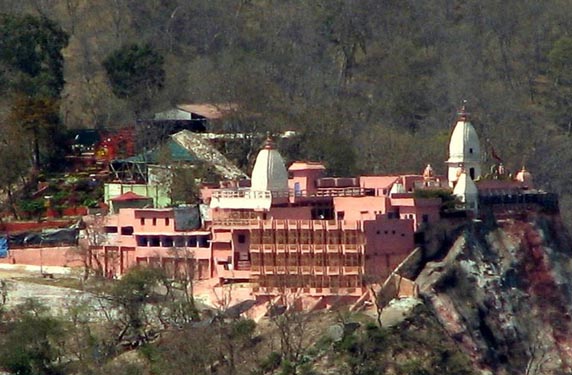Mansa Devi Temple

Information of Mansa Devi Temple, Haridwar, Uttarakhand
Mansa Devi Temple is one of the ancient Hindu goddess temples in the gateway of god's city. It is also known as the Bilwa Tirth and Panch Tirth in Haridwar. This temple is a Shakthi Peeth for the Hindus and is a famous pilgrim place here. It is beautifully situated on the hilltop of Bilwa Parvat. To reach here once can go up hills by a trek or use the cable car. It has a splendid view of the River Ganges along with the Haridwar plain lands and its city. This is also a famous tourist spot on the southern most point of the Himalayas of Shivalik range. This temple is divinely located at Gharwal regions of Harwdar District, Uttrakhand State in India.
Mansa Devi Temple Religious Significance
Manasa literally means wishes; it is believed that Manasa Devi will bless her devotees to fulfill their wishes. It is a practices followed since the ancient times to tie a rope in the temple trees along with their prayers for a wish to happen. When such wishes are realized, the devotees once again visit this temple to remove the tied rope. The Hindus also consider her as the one of the Shakthi Peetha and she is adorned as Mother Goddess. Praying to a Mother God will always fulfill to its children's wishes. This temple is function round the clock and is open from morning 8 AM to evening 6 PM. The daily rituals are conducted in this temple by its temple priest. There are two forms of deities are kept for worship. This is a great worship place atop the hills with the view of the holy Ganges River. Here the river and this goddess are called as Maa or the Mother by the Hindu peoples.
Festival at Mansa Devi Temple
The Navarathri is the important festival celebrated in the Mansa Devi Temple. It is a 2 week festival celebrated with grand rituals and ceremonies to Manasa Devi and it is witnessed by thousands of devotees. It is also the closing time of the Hardwar Pilgrimage and who ever come in this pilgrim season will as attend its temple festivals.
Mansa Devi Temple Mythology & History
There are many legends for the origin of Mansa Devi Temple. It is believed to be one of the Shakthi Peetha in the Vedic Texts of Hinduism. It is said here that the Sathi Devi's right arm fell here, that's why it is worshiped as a Shakthi Peeth. The other stories are that Manasa Devi is the sister of Serpent Geodes named Vasuki. This temple is also associated with the Mahabharata legends named the Pandavas in the Dvapara Yuga which is estimated around 700 BC. This temple is presently considered as the Shakthi Peetha and Manasa Devi is worshiped as powerful Mother Goddess since ancient times.
Mansa Devi Temple Architectural Significance
Mansa Devi Temple at Harwdar is an ancient temple and is unknown for its creators. It is believed that the Mahabharata legends laid the foundation for the major temples in Haridwar. This temple has gone through much modification and the present temple is seen in the modern style. This is seen in the Nagara architectural pattern of those Hindu temples found in North India. Currently there are many pilgrim amenities built around the temple complex are seen. Such as pilgrims accommodation and temple administration buildings are built on the top of the hills. The temple occupies the vast areas of the hilltop mound. The main temple is an obelisk tower structure. Here there has 2 primary deities, either the arms only differs, each deity having 4 arms and 8 arms. The main shrine cell is just below this main tower. To reach this hilltop a fine tar road is there and also the rope way.
- Andhra Pradesh Temples
- Assam Temples
- Bihar Temples
- New Delhi Temples
- Goa Temples
- Gujarat Temples
- Jammu and Kashmir Temples
- Karnataka Temples
- Kerala Temples
- Madhya Pradesh Temples
- Maharashtra Temples
- Odisha Temples
- Punjab Temples
- Rajasthan Temples
- Sikkim Temples
- Tamil Nadu Temples
- Telangana Temples
- Uttar Pradesh Temples
- Uttarakhand Temples
- West Bengal Temples